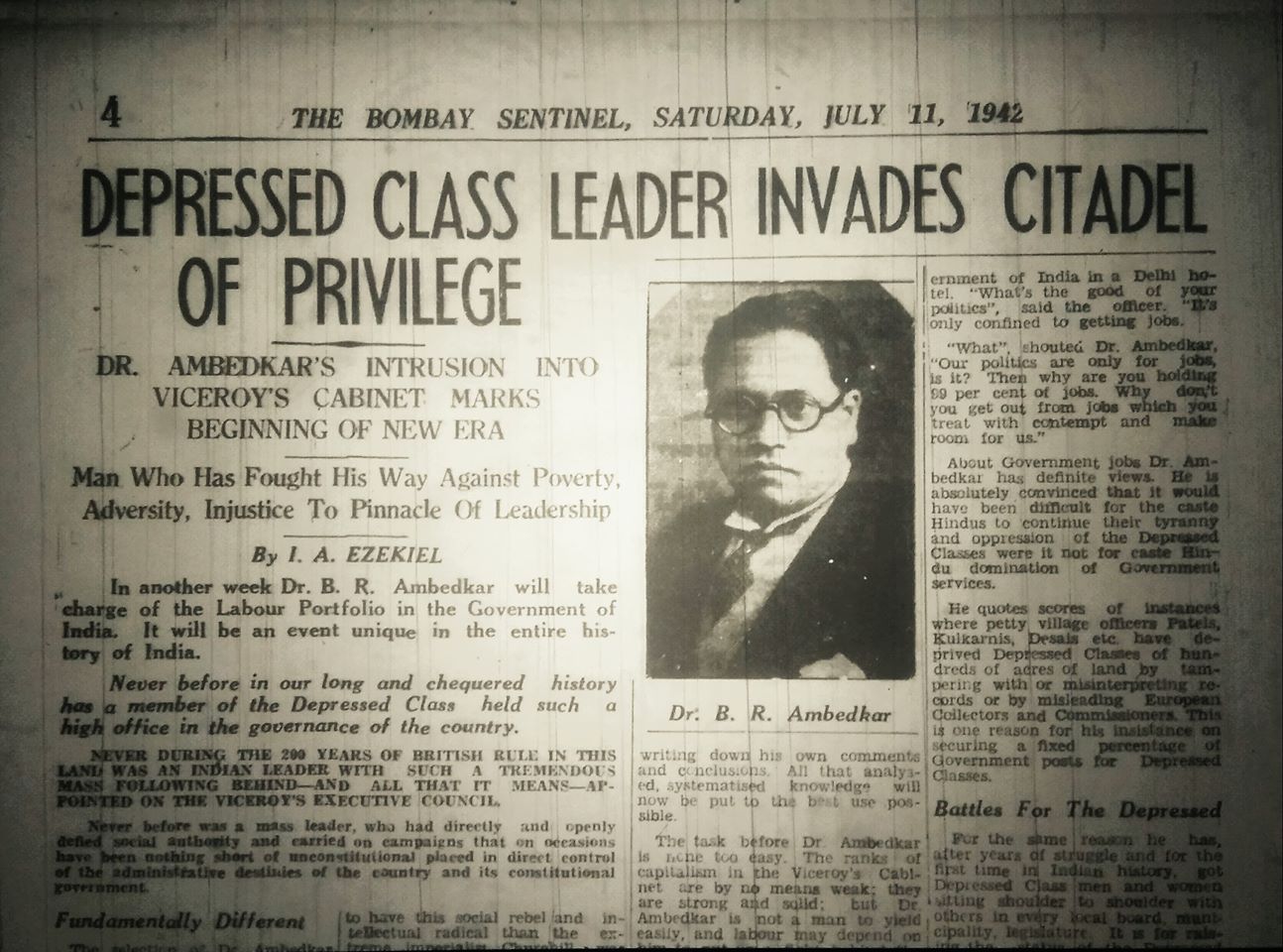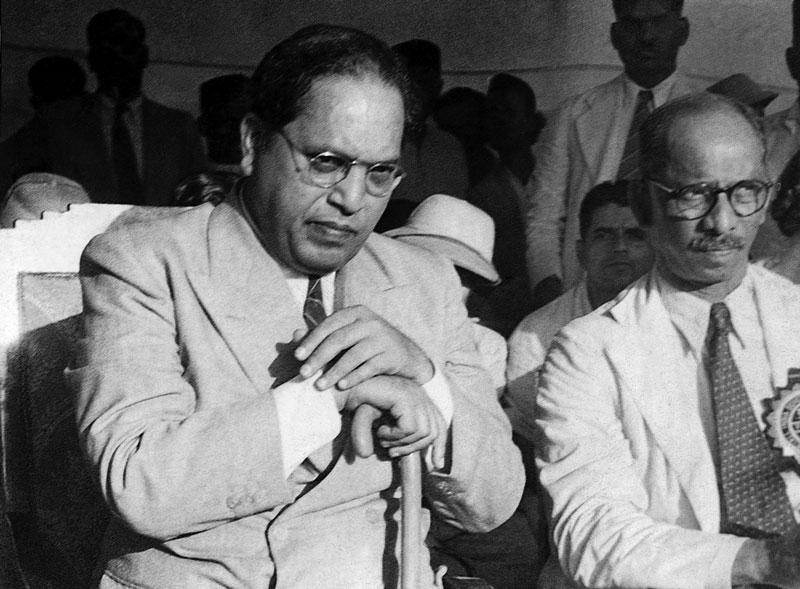
“It was depressing that we don’t have enough resources with us. We don’t have money; don’t have newspapers; Through out India, each day our people are suffering under authoritarian with no consideration and discrimination; those are not covered in the newspapers. By a planned conspiracy the newspapers are involved full fledged in silencing our views on socio political problems” - (Dr. B.R. Ambedkar, 1993)
Exploring Babasaheb's Journalistic Legacy
When the name Babasaheb Bhim Rao Ambedkar is invoked, it is often in the context of his seminal contributions to the Constitution of India. Yet, the multifaceted persona of Dr. Ambedkar extends far beyond the realm of constitutional jurisprudence. Few are aware that he was also a pioneering journalist, harnessing the power of the written word to catalyse social transformation.
Dr. Ambedkar's journalistic endeavours served as a potent platform for social revolution, providing a voice to the marginalised and underserved communities. While Mahatma Gandhi's initiative to launch 'Harijan' in 1933, aimed at championing the cause of the untouchables, garnered widespread acclaim, it is worth noting that this effort came to fruition only post the Poona Pact.
In stark contrast, Dr. Ambedkar's tireless efforts in the realm of journalism remain conspicuously overlooked. He not only championed the cause of the oppressed through his writings but also demonstrated an unwavering commitment to journalistic excellence by founding and running four newspapers dedicated to his people. Yet, the mainstream media, often perceived as pro-Congress, has been remiss in acknowledging Dr. Ambedkar's pioneering role as a journalistic stalwart. Amidst a media landscape that frequently neglects the plight and struggles of the oppressed, Dr. Ambedkar's quest for a media platform, a mouthpiece for his ideology, gains renewed significance. He fervently believed in the transformative power of newspapers, envisioning them as catalysts capable of effecting meaningful change in the lives of millions languishing in the shadows of societal inequities. As we commemorate his legacy, it is imperative to recognise and celebrate Dr. Ambedkar's indomitable spirit and his invaluable contributions to the world of journalism, which remain an enduring testament to his vision of a more equitable society.
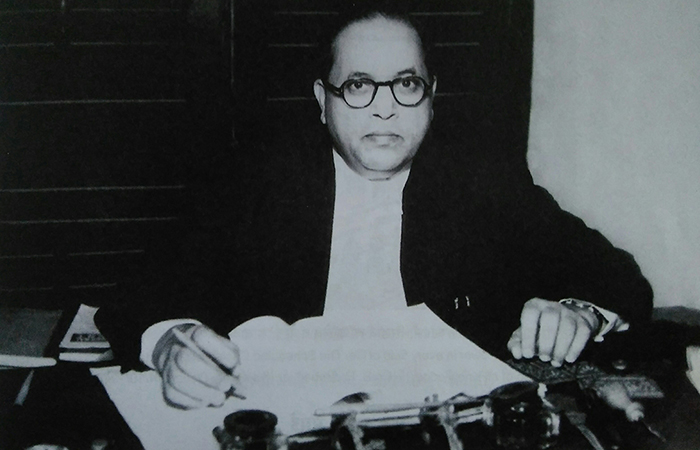
Dr. Ambedkar's Newspaper Names: A Manifesto of Social Justice
The names chosen by Dr. B.R. Ambedkar for his newspapers serve as a powerful testament to his unwavering commitment to championing the rights of the oppressed. 'Mook Nayak' (The leader of the dumb), 'The Janata' (The People), and 'Bahiskrit Bharat' (Excluded India) were not mere titles but manifestos that encapsulated the ethos and aspirations of the marginalised communities he sought to uplift. One of the most iconic moments in the annals of India's struggle for social justice was the historic march led by Dr. Ambedkar to Chowdar tank in Mahad in March 1927. This audacious act, where the oppressed asserted their right to water by partaking from the communal tank, was met with fierce resistance from caste Hindu groups. Despite the peaceful nature of the protest, the gathering was marred by violence, marking the inaugural open conference for the depressed classes.
The incident reverberated across the nation, capturing headlines and igniting a divided mediascape. Newspapers in Maharashtra were divided in their coverage, with some condemning the bold initiative, others invoking legalities to justify their stance, and a few lauding the courage of the Untouchable Hindus. Amidst this cacophony of opinions and the flood of criticism directed at him, Dr. Ambedkar keenly felt the need for a dedicated platform to articulate the aspirations and grievances of the oppressed. Responding to this imperative with characteristic resolve, Dr. Ambedkar launched 'Bahishkrit Bharat,' a fortnightly Marathi newspaper, on April 3, 1927, in Bombay. In elucidating the aim of the journal, he astutely observed that one's commitment to spearheading a newspaper for the welfare of the people should be complemented by an independent profession for personal sustenance. This insight reflected his pragmatic approach to advocacy and underscored the dual role he embraced as both a legal luminary and a journalistic trailblazer.
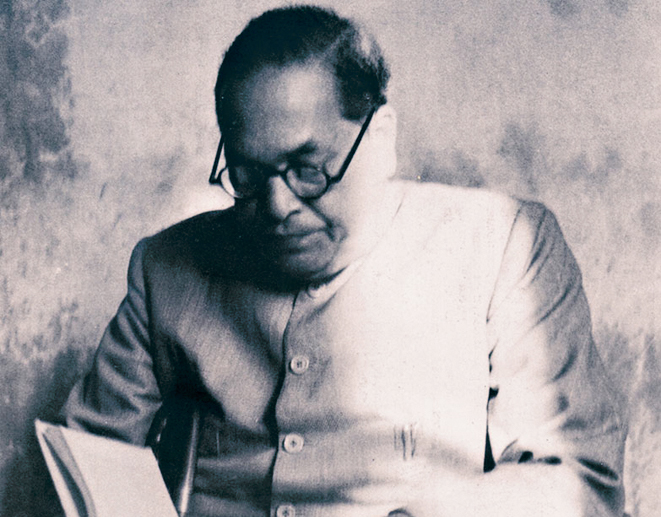
Babasaheb - The Journalist
In the rich tapestry of Dr. B.R. Ambedkar's illustrious career, his foray into journalism stands as a testament to his indomitable spirit and commitment to social justice. A pivotal moment in this journalistic journey was the inception of 'Mook Nayak' on January 32, 1920, a fortnightly paper that would serve as a beacon for the oppressed, supported by the Maharaja of Kolhapur.
Though Dr. Ambedkar was not formally designated as its editor, his visionary imprint was indelibly stamped on its pages, making 'Mook Nayak' his veritable mouthpiece. However, the reception it received was indicative of the tumultuous and discriminatory times it was born into. The renowned Kesari newspaper, helmed by Lokmanya Tilak, rebuffed attempts to publish an advertisement for 'Mook Nayak,' underscoring the pervasive bias and discrimination of the era.
The rejection of the advertisement request by Kesari exemplifies the extent to which entrenched prejudices permeated society. Not only were the oppressed subjected to social ostracisation, but even the act of promoting a newspaper dedicated to their cause was deemed unacceptable—a stark manifestation of the deep-rooted prejudices that plagued society.
Interestingly, parallels can be drawn between the media histories of the American Black community and the oppressed classes in India. Having spent formative years studying in America, Dr. Ambedkar was well-acquainted with the nuances of the media industry and the pivotal role it played in shaping societal narratives. Recognising the potential for mainstream Indian media to perpetuate the hegemony of Caste Hindu ideology, Dr. Ambedkar astutely chose to carve out a separate space for the oppressed. His decision to establish and champion newspapers dedicated to their cause was a strategic masterstroke, aimed at providing a platform for their voices to be heard and their stories to be told.
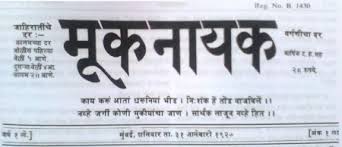
The Role of Dalit Newspapers in Shaping Political Discourse
The resurgence of writings on Dr. B.R. Ambedkar, caste, and Dalit politics in recent years reflects a growing interest in understanding the complexities of India's social and political landscape. While much attention has been given to Ambedkar's political and social philosophy, his journalistic legacy remains relatively unexplored and under-appreciated. The newspapers associated with Dr. Ambedkar played a pivotal role in disseminating radical political ideas and fostering a sense of unity and empowerment among the oppressed communities. These newspapers served as platforms for challenging the status quo, highlighting issues of caste violence, representation, and religious fundamentalism, and advocating for social justice and equality.
Despite their significance in shaping the history of Dalit political activism, Dalit newspapers and their role in the Dalit movement have largely been overlooked in contemporary writings on Ambedkar and Dalit politics. This oversight is particularly unfortunate given that these newspapers are repositories of invaluable information that can deepen our understanding of the history, struggles, and aspirations of the Dalit community. Dr. Ambedkar's role as a journalist and editor of these newspapers deserves greater recognition and study. Unlike his scholarly writings, which were predominantly in English, his journalistic works were published in Marathi, reflecting his commitment to reaching a broader audience and connecting with the grassroots level.
By studying the newspapers associated with Dr. Ambedkar, we can contextualise and trace the history of Dalit political discourse, understand the challenges faced by the oppressed communities, and appreciate the contributions of Dalit activists and leaders in advocating for social justice and equality. Moreover, it allows us to recognise the resilience, creativity, and determination of the Dalit community in using journalism as a tool for empowerment and social change.
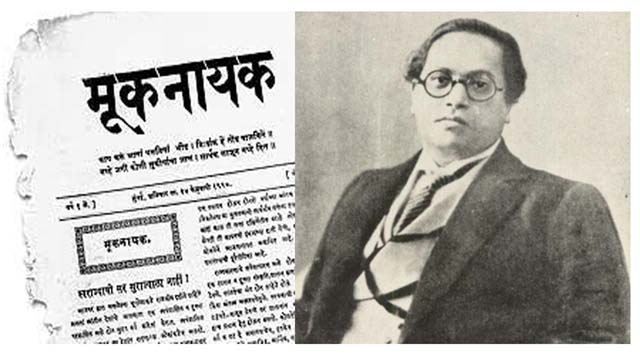
Shaping Marathi Media and Advocating for Social Justice
Dr. B.R. Ambedkar's foray into journalism in Maharashtra marked a significant milestone in the history of Marathi media and Dalit activism. His journey began in 1920 with the launch of Mooknayak, followed by Bahishkrut Bharat, Janata, and Prabuddha Bharat. While his active career as a journalist was relatively short-lived, his contributions to Marathi journalism were profound and enduring. The legacy of Dalit newspapers in Maharashtra can be traced back to Jotiba Phule's Satyashodhak movement, with early efforts by leaders like Shivram Janba Kamble and Kisan Faguji Bansode. However, it was Dr. Ambedkar who brought a new dimension to Dalit journalism, elevating it from the margins to the mainstream and fundamentally shaping its contours.
Dr. Ambedkar's newspapers served as platforms for challenging the status quo, advocating for social justice, and fostering unity among the oppressed communities. Despite facing financial constraints and operational challenges, his newspapers played a pivotal role in disseminating radical political ideas and fostering a sense of empowerment among the Dalit community.
One of the fascinating aspects of Dr. Ambedkar's journalism was his firm belief that journalism should not blindly cater to the masses but should help in establishing democratic ideas and setting examples for the people. He was a visionary who consciously made decisions that deeply influenced his journalistic ventures, even if it meant facing criticism or financial hardships.
Dr. Ambedkar's command over the Marathi language, coupled with his lucid style of writing and scholarly approach, made his editorials and commentaries compelling and impactful. His dedication to learning and understanding different dimensions of Marathi literature enabled him to articulate his ideas effectively and resonate with his readers.
Despite the financial challenges faced by his newspapers, Dr. Ambedkar remained steadfast in his principles, particularly when it came to the issue of advertisements. He criticised newspapers that encouraged irresponsible advertisements perpetuating inequality and ritualism, arguing that he would rather publish no advertisements than publish 'socially immoral and vulgar advertisements'.
In conclusion, Dr. B.R. Ambedkar's journalism legacy in Maharashtra serves as a testament to his commitment to social justice, equality, and democracy. His insightful interventions, uncompromising principles, and visionary approach to journalism continue to inspire journalists, activists, and scholars alike. As we reflect on his contributions to Marathi media and Dalit activism, it becomes evident that Dr. Ambedkar's journalistic ventures were not only a reflection of his times but also a beacon guiding us towards a more inclusive and equitable society.
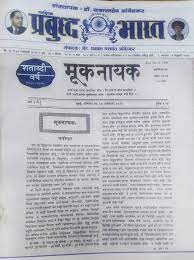
The Role of Mooknayak, Bahishkrut Bharat in Challenging Caste Violence
The pages of Mooknayak and Bahishkrut Bharat echoed with powerful critiques of the Hindu religion, its scriptures, and the societal divisions perpetuated by caste. These newspapers, under the editorial guidance of Dr. B.R. Ambedkar, became platforms for challenging the Congress and right-wing Hindu nationalists for their apathy towards caste-based discrimination and violence.
Dr. Ambedkar, in his writings for Mooknayak, highlighted the inherent flaws in a society divided by caste. He metaphorically described Hindu society as a multi-storied tower without connecting stairs, where each floor represented a different caste. Such a society, he argued, stifled opportunities for inter-caste interactions, perpetuating indifference, hierarchy, and violence, thereby undermining national unity.
The 1920s marked a transformative decade for the Dalit movement, particularly in western India. Dalit grievances were translated into effective political and organisational language, culminating in the Mahad Satyagraha of 1927, a watershed moment in Dalit mass politics. The violent aftermath of the Mahad agitation reinforced Dr. Ambedkar's belief in the need for Dalits to assert their distinct identity separate from the Hindu community. He argued that continuous deprivation and violence against Dalits by upper-caste Hindus eroded any semblance of social cohesion between them. In Bahishkrut Bharat, Dr. Ambedkar further contended that Hindu society's failure to foster social affinity among its members was a root cause of caste-based violence. This newspaper not only served as a platform for intellectual discourse but also played a pivotal role in shifting public opinion against caste violence. Dr. Ambedkar's editorials in Bahishkrut Bharat were often read aloud at Dalit gatherings, underscoring his role as an influential communicator and mobiliser.
The question of violence against Dalits remained a focal point in Dr. Ambedkar's subsequent periodicals, Janata and Prabuddha Bharat. These newspapers published numerous reports and testimonies documenting incidents of violence against Dalits in western India. Dr. Ambedkar's emphasis on structural violence as a defining aspect of the Dalit experience was instrumental in galvanising Dalit communities across western India.
In conclusion, Mooknayak and Bahishkrut Bharat, under the editorial leadership of Dr. B.R. Ambedkar, emerged as powerful tools for challenging caste-based discrimination and violence. Through these newspapers, Dr. Ambedkar not only critiqued the prevailing societal norms but also enabled Dalits to assert their rights and demand social justice. His writings and editorials continue to inspire and resonate with those fighting against caste-based discrimination and violence in contemporary India.
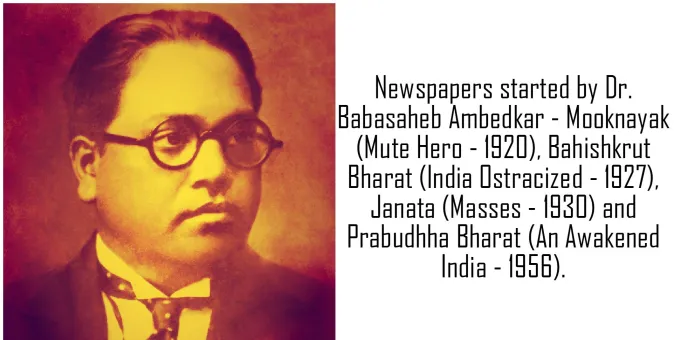
Bridging Divides: Stance on Interfaith Marriage Amidst Hindu-Muslim Conflicts
In the charged atmosphere of 1927, Marathi newspapers were abuzz with debates and controversies surrounding an interfaith marriage between a Hindu girl and a Muslim man, involving the granddaughter of renowned scholar R.G. Bhandarkar. The opposition to this marriage was particularly pronounced in Pune-based Marathi newspapers. Amidst this backdrop, Dr. B.R. Ambedkar, through his editorial in Bahishkrut Bharat, emerged as a voice advocating for interfaith harmony and individual freedom. His editorial in Bahishkrut Bharat was a passionate defence of the interfaith marriage. He argued that promoting interfaith marriages could play a crucial role in fostering mutual understanding and rebuilding trust between Hindus and Muslims. He firmly believed that marriage was a personal matter, and outsiders had no right to interfere or dictate terms.
The 1920s were marked by increasing Hindu-Muslim conflicts, particularly in the Bombay Presidency. V.D. Savarkar's leadership during this period laid down the foundations of Hindu nationalism, further polarising the political landscape. Debates surrounding Shuddhi (reconversion of Hindus who had converted to other religions) and Sanghatan (Hindu unity) were revitalised in Marathi newspapers, fuelling communal tensions. Against this polarised backdrop, many mainstream Marathi newspapers, including some nationalist ones, openly supported calls to combat Muslims. In contrast, Dr. Ambedkar's editorial stance in Bahishkrut Bharat stood out as a plea for mutual respect, understanding, and the recognition of individual freedoms, including the right to choose one's life partner irrespective of religious beliefs.
Dr. Ambedkar's editorial was not merely an isolated opinion but represented a broader vision for a pluralistic and inclusive society. He argued that the society should embrace diversity and promote interfaith marriages as a means to foster unity and understanding. His stance on this issue showcased his progressive and forward-thinking approach to social and religious harmony, which remains relevant even today. Amidst rising Hindu-Muslim conflicts and communal conflicts in the 1920s, Dr. B.R. Ambedkar's editorial in Bahishkrut Bharat served as a beacon of hope and a call for unity. His advocacy for interfaith marriages and individual freedoms highlighted his commitment to building a pluralistic and inclusive society. His writings and editorials continue to inspire those advocating for interfaith harmony and social justice in contemporary India.
Representation of Babasaheb in Indian Media
National Leader vs. Dalit Leader in Media Narratives
Dr. B.R. Ambedkar's towering legacy as a national leader is often overshadowed by his categorisation as a Dalit leader, a phenomenon highlighted by Venkatesh in 2006. The role of media in shaping and perpetuating social identity cannot be understated, and in Dr. Ambedkar's case, this influence has been both profound and, at times, limiting. Despite his incredible contributions to nation-building and social justice, Dr. Ambedkar's multifaceted persona is often reduced to a singular identity as a Dalit leader. This reductive portrayal has persisted from the early stages of his struggle for social justice to the present day, even as the nation commemorates his 100th birth anniversary. The scant attention accorded to Dr. Ambedkar by the Indian media stands in stark contrast to his monumental impact on Indian society.
Dr. Ambedkar himself was acutely aware of this bias against him in the media landscape. He perceived that his views and contributions were often sidelined, a sentiment that underscores the media's broader bias and the challenges faced by leaders who challenge entrenched norms and power structures. The Indian media's inclination to align with traditional Brahminical values and perspectives has further exacerbated this issue. Before projecting someone as a viable candidate for leadership or public acclaim, the media often seeks validation from the temple of Brahminism, reinforcing existing hierarchies and prejudices. This inherent resistance to change have historically manifested as a form of disdain or hostility towards Dr. Ambedkar, limiting his recognition and influence within mainstream media narratives. Instead of celebrating his visionary leadership and commitment to social justice, the media's portrayal of Dr. Ambedkar has been coloured by these biases, perpetuating stereotypes and denying him the recognition he rightfully deserves as a national leader.
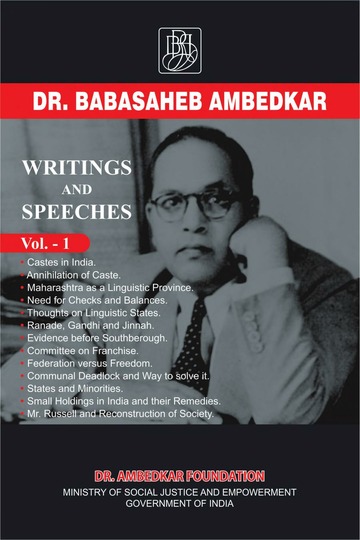
A Comparative Analysis with African-American Spokesmen
The media's role in shaping public perception is a powerful one, with the placement, space, and language used in news content often revealing underlying biases and ideologies. A critical examination of the coverage of Dr. Ambedkar in newspapers reveals a pattern of neglect and marginalisation, reminiscent of the poor coverage received by renowned Black American spokesman Booker T. Washington in the White press. Just as Washington lamented the relegation of his impactful speeches to the last page, overshadowed by sensationalised accounts of minor criminal offences involving Black individuals, Dr. Ambedkar faced similar challenges in receiving fair and objective coverage. The colonial and post-colonial national media's response to Dr. Ambedkar's struggles was characterised by a conspicuous lack of importance and understanding of his advocacy for social justice and political rights.
During pivotal moments such as Dr. Ambedkar's participation in the round table conferences, the media's portrayal was particularly skewed. Rather than objectively analysing his arguments for political rights from the perspective of the oppressed, newspapers depicted him as a traitor, reflecting an overtly casteist and upper-caste perspective that was detached from the ground realities faced by the marginalised communities. This biased portrayal is eerily reminiscent of the media coverage during the American civil rights movement. The Kerner Commission's scathing critique in 1967, which condemned the press for perpetuating a white-centric worldview, resonates with the challenges faced by Dr. Ambedkar in India. The media's entrenched biases and perspectives have historically limited their ability to accurately represent the struggles and aspirations of marginalized communities, perpetuating stereotypes and hindering progress towards social justice.
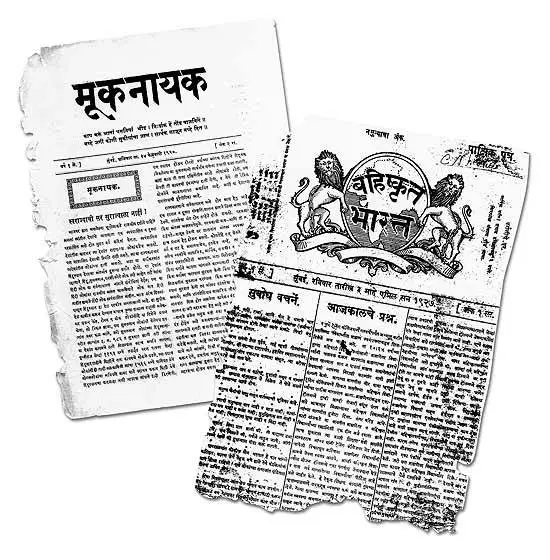
The Vernacular Press and Dr. Ambedkar: A Legacy of Contention and Misrepresentation
The relationship between the vernacular press and Dr. B.R. Ambedkar was marked by a complex interplay of bias, condemnation, and misrepresentation. Instead of providing objective coverage of his advocacy for social justice and political rights, the vernacular press often echoed the sentiments and biases prevalent in the English press, resulting in a skewed portrayal of Dr. Ambedkar's contributions and struggles. When he achieved significant victories, such as securing separate electorates and double votes for the depressed classes, he faced condemnation from various quarters, including the Congress, the press, and so-called patriots. The Tamil press, for instance, was particularly critical of Dr. Ambedkar's role in the round table conferences, with editorials in publications like Vikatan casting aspersions on his motives and accusing him of betraying the majority. In a particularly egregious example, an article titled "Kadhambam" published in Vikatan likened Dr. Ambedkar's efforts to a well designed to sink the untouchables upside down, referring to separate electorates as the name of this purported well (Jeganathan, 2006). Such derogatory and inflammatory language was reflective of the media's broader bias and the challenges faced by Dr. Ambedkar in garnering support for his initiatives.
The Bombay Chronicle, echoing Mahatma Gandhi's views, characterised Dr. Ambedkar's efforts as an attempt to turn the national majority of Hindus into a minority, further fuelling the narrative of betrayal and treachery. B.G. Horniman's scathing article on the eve of the Bombay conference epitomised this sentiment, admonishing Dr. Ambedkar for his "superior aloofness" and his attempts to "dictate" to the country (Keer, 1954). The rift between Dr. Ambedkar and Gandhi over the temple entry movement further exacerbated tensions. While Dr. Ambedkar opposed the movement, arguing that it did not address the root cause of untouchability and was based on majority principles rather than moral imperatives, Gandhi's support for Varnashram as an integral part of Hinduism further widened the ideological chasm between them.
The press's reaction to Dr. Ambedkar's statements was predictably hostile, with the national media launching a campaign of hatred and vilification against him. He was depicted as Bhimasur, a devil, and a Brahmadveshta, reflecting the deep-seated biases and prejudices that pervaded the media landscape.
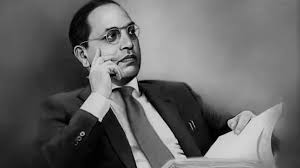
A Critical Examination of Media Responses in U.P., 1946-48
A nuanced understanding of Dr. B.R. Ambedkar's political ideology and vision for the Scheduled Castes Federation during the tumultuous period of 1946-48 reveals a complex interplay of nationalism, identity, and aspiration. Dr. Ambedkar's proposition for the Scheduled Castes to form a "third nation" amidst the looming shadow of partition was a radical departure from mainstream political discourse, reflecting his deep-seated concerns about the potential marginalisation and neglect of the oppressed communities. Dr. Ambedkar's support for the Muslim League's demand for a separate nation was a calculated political move aimed at safeguarding the interests and securing the rights of the Scheduled Castes within the broader political landscape of a partitioned India. However, this stance was met with skepticism, criticism, and outright dismissal from various quarters, including the media in Uttar Pradesh (U.P.).
Newspapers in U.P., particularly editorial pieces in publications like Vartman, were quick to condemn Dr. Ambedkar's speech as "reactionary and against the ideals of Indian nationalism." This characterisation reflected the prevailing sentiment of the time, where Dr. Ambedkar's advocacy for the Scheduled Castes was often viewed through the narrow lens of mainstream nationalism, devoid of an understanding or appreciation of the unique challenges and aspirations of the oppressed communities. The media's dismissal of Dr. Ambedkar's vision for a "third nation" underscores the broader challenges faced by Dalit politics in navigating the complex terrain of Indian nationalism, identity, and representation. Dr. Ambedkar's proposition, while controversial, was rooted in a profound understanding of the structural inequalities and systemic discrimination faced by the Scheduled Castes, and his advocacy for their rights and recognition deserves to be evaluated in this context.
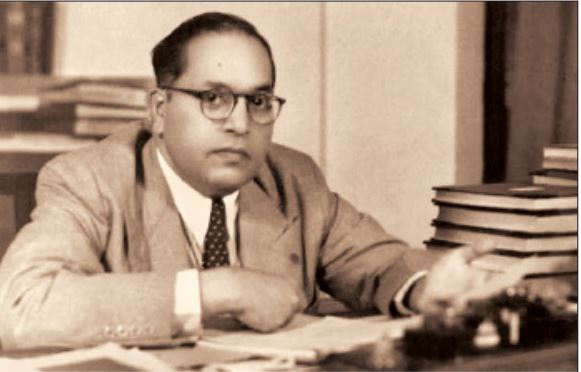
What Babasaheb had to say about the Media
Babasaheb on Media Representation: Underrepresentation, Discrimination, and Ownership in Indian Newspapers
Dr. B.R. Ambedkar's insights into the role of newspapers and media representation offer a trenchant critique of the prevailing biases, underrepresentation, and discrimination faced by the oppressed communities in India. His observations, spanning multiple works and volumes, shed light on the systemic challenges and structural inequalities that have historically plagued the media landscape and hindered fair and equitable representation.
Dr. Ambedkar lamented the glaring absence of news coverage on the plight of the oppressed communities, highlighting a deliberate and systematic effort by newspapers to silence their voices and suppress their views on socio-political issues.
In his own words - “It was depressing that we don’t have enough resources with us. We don’t have money; don’t have newspapers; Throughout India, each day our people are suffering under authoritarianism with no consideration and discrimination; those are not covered in the newspapers. By a planned conspiracy, the newspapers are involved full-fledged in silencing our views on socio-political problems”
This candid assessment by Dr. Ambedkar underscores the media's complicity in perpetuating a narrative that marginalises and excludes the oppressed communities, thereby denying them a platform to voice their concerns, aspirations, and grievances. Dr. Ambedkar further elucidated the reasons behind this underrepresentation and discrimination, pinpointing the absence of a press dedicated to the interests of the oppressed communities and the dominance of upper-caste interests in determining media coverage and narratives.
He astutely observed: “The untouchables have no press. The congress press is closed to them and is determined not to give them the slightest publicity. They cannot have their own press and for obvious reasons. No paper can survive without advertisement revenue”
This statement by Dr. Ambedkar highlights the economic constraints and structural barriers that prevent the oppressed communities from establishing their own media outlets and securing fair representation in mainstream media. Furthermore, Dr. Ambedkar was acutely aware of the ownership dynamics in the media industry, recognising the pivotal role it plays in shaping newspaper objectives, politics, principles, and ideologies.
He pointed out - “The staff of the Associated Press of India, which is the main news distributing agency in India, is entirely drawn from Madras Brahmins – indeed the whole of the press is in their hands, and, for well-known reasons, are entirely pro-Congress and will not allow any news hostile to the Congress to get publicity. These are reasons beyond the control of the untouchables”
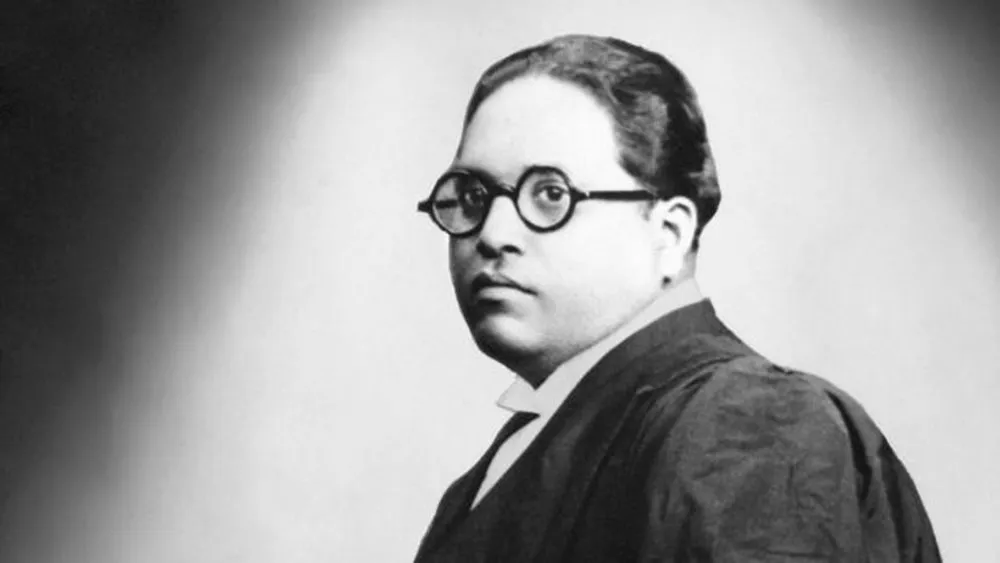
The historical analysis of media representation during Dr. B.R. Ambedkar's era reveals a disturbing pattern of bias, underrepresentation, and marginalisation. The newspapers of the time, predominantly owned and influenced by Congressmen and caste Hindus, were reluctant to publish stories and opinions that challenged the prevailing social order and Hindu orthodoxy. Dr. Ambedkar, a vocal advocate for the rights of the oppressed and a staunch opponent of untouchability, found himself at odds with this entrenched media bias. Interpreting the media's portrayal of Dr. Ambedkar, it becomes evident that he was often marginalised, portrayed negatively, and given less prominence compared to other leaders of the freedom movement. The language, tone, placement, and space allocated to news about Dr. Ambedkar reflected a deliberate attempt to undermine his contributions and paint him as an outsider or a threat to Indian society.
Dr. Ambedkar's awareness of the media ownership dynamics and the social composition of the media industry informed his decision to establish newspapers dedicated to the interests of the oppressed communities. His understanding that the mainstream media was aligned with dominant institutions and ideologies, such as Hinduism and the Congress party, underscores the challenges faced by those who sought to challenge the status quo and advocate for social justice.
Drawing upon Marxist media analysis, it can be inferred that Indian newspapers were 'locked into the power structure' and acted largely in tandem with dominant institutions, reproducing their viewpoints as the central and "obvious" or "natural" perspective (Curran et al. 1982). The media's alignment with caste Hindus and its reluctance to challenge the caste hierarchy further perpetuated the marginalisation of the oppressed communities. Also, the Indian media's narrow focus on the Congress movement and the freedom struggle, at the expense of highlighting the living standards of the oppressed and the brutal realities of untouchability, reflects a selective and biased approach to news coverage. Dr. Ambedkar, who was often the voice of the voiceless, was conspicuously absent from mainstream media narratives, further exacerbating the underrepresentation of the oppressed communities.
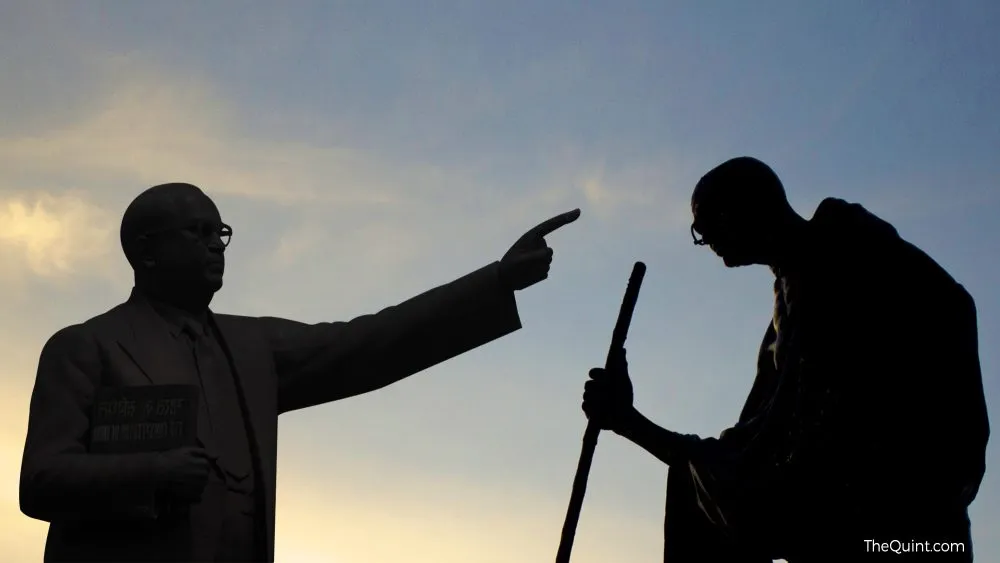
Ambedkar vs Gandhi - A battle of ideologies
Evolution of Dr. B.R. Ambedkar’s Views on Hinduism, Islam, and Mahatma Gandhi in the 1920s
The 1920s marked a significant period in Dr. B.R. Ambedkar's evolving stance on religion, particularly Hinduism, and his relationship with Mahatma Gandhi. During this decade, Ambedkar's critical views on Hinduism began to shift from reform towards advocating for conversion to another religion, notably Islam. Additionally, his perception of Mahatma Gandhi underwent a transformation, reflecting the changing dynamics of their relationship over time. In 1929, the threat of 5,000 Dalits from Jalgaon to collectively renounce Hinduism sparked a massive debate on conversion. In support of the Jalgaon Dalits, Ambedkar, through Bahishkrut Bharat, advocated for embracing Islam. He argued that Islam's principles of equality offered a more welcoming environment for Dalits. To educate his readers about Islam, he started a series of articles in Bahishkrut Bharat exploring various aspects of the religion.
This shift in Ambedkar's stance towards advocating for conversion to Islam was a significant departure from his earlier more reform-oriented views on Hinduism. It reflected his growing disillusionment with Hinduism's ability to eradicate caste-based discrimination and offer equality to Dalits. Mahatma Gandhi's emergence as a prominent leader during this period also influenced Ambedkar's evolving views. In the early 1920s, Ambedkar's perception of Gandhi was cautiously optimistic. While he opposed Gandhi's non-cooperation movement, he admired Gandhi's courage in challenging Brahmin orthodoxy and viewed his leadership of Congress with some optimism.
However, as Dalit mass politics gained momentum in 1927, Ambedkar's opinion of Gandhi became increasingly critical. He vehemently criticised Gandhi's views on the varna system and his patronising attitude towards untouchables in his commentaries in Bahishkrut Bharat. While Gandhi's emphasis on eliminating untouchability initially invigorated hope for change, Ambedkar became disillusioned with Gandhi's approach over time. The 1920s were a transformative period in Dr. B.R. Ambedkar's intellectual and political journey. His evolving views on religion, particularly his advocacy for conversion to Islam, and his changing relationship with Mahatma Gandhi reflect the complexities of the socio-political landscape of the time. These developments laid the groundwork for Ambedkar's later struggles for social justice, equality, and the rights of the Dalit community in India.
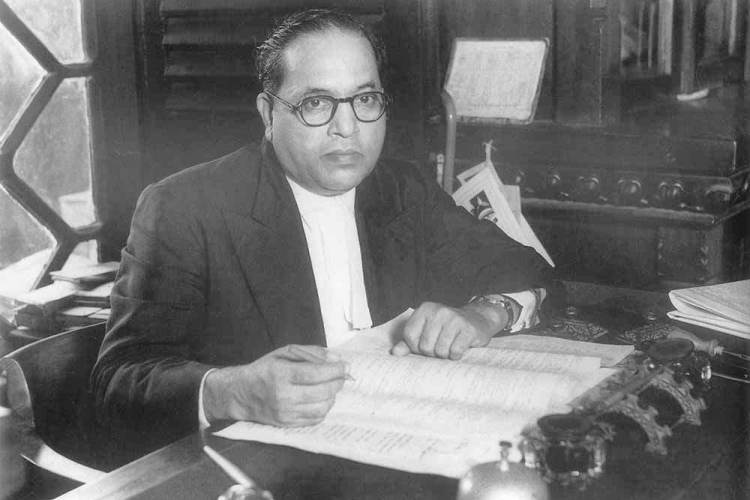
Mass Activism and Leadership
Dr. B.R. Ambedkar's brief but impactful tenure as an editor of Mooknayak and Bahishkrut Bharat in the 1920s left an indelible mark on India's socio-political landscape. His editorship played a pivotal role in shaping a new era of politics characterised by mass activism and mobilisation, particularly among Dalits. Furthermore, his evolving relationship with Mahatma Gandhi and Congress during the 1930s added a new dimension to his leadership, which was absent in the 1920s. Despite the short duration of his editorship, Ambedkar's writings in Mooknayak and Bahishkrut Bharat set the tone for a new politics that was oriented towards mass activism. His editorials and commentaries were not only impactful in mobilising Dalits but also instrumental in establishing his leadership within the community. His radical politics and firm belief in professional integrity were evident in his journalistic journey, illustrating his commitment to social justice and equality.
While Ambedkar was critical of Gandhi's approach to caste and untouchability, he also acknowledged Gandhi's honesty and austerity. In his commentaries in Bahishkrut Bharat, Ambedkar urged Gandhi to use his charisma to address the pressing issues of caste and untouchability. As Ambedkar rose to national prominence in the early 1930s, his relationship with Gandhi and Congress evolved, adding a new dimension to his leadership and political journey.
As Dr. B.R. Ambedkar once again takes centre stage both politically and intellectually in contemporary India, it becomes increasingly important to remember and acknowledge his journalistic legacy. His writings not only reflect his radical politics but also his unwavering commitment to professional integrity. Through his journalism, Ambedkar laid the groundwork for the struggles for social justice, equality, and the rights of the Dalit community in India, leaving behind a legacy that continues to inspire generations.
End.

